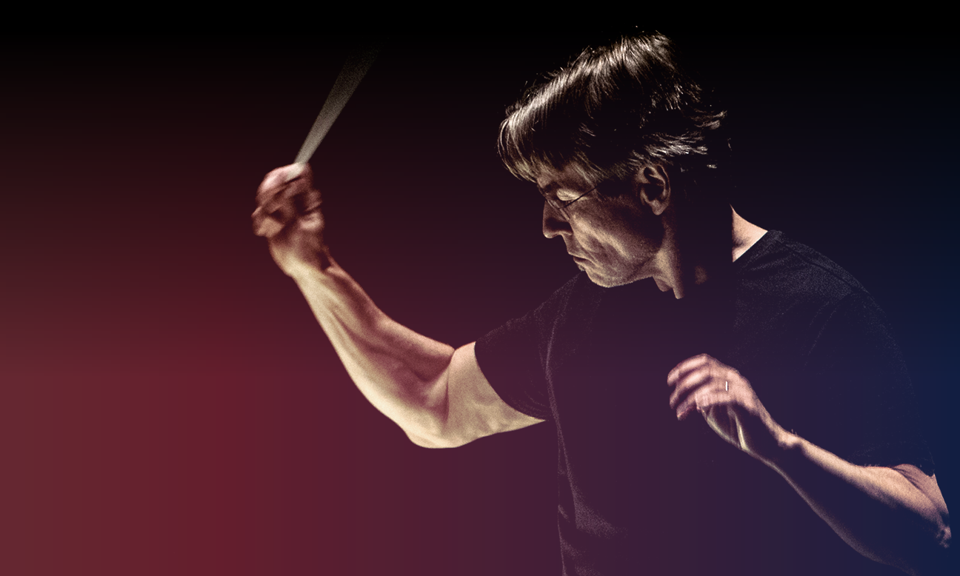
EXUBERANCE OVER A PRODIGAL SON
LOS ANGELES—Yet another grand Salonen love-in, with his third orchestra on the West Coast this year. Is there no end? This time, it was Esa-Pekka leading his former crack ensemble, the L.A. Philharmonic, in his long meandering farewell tour before taking the reins at the S.F. Symphony next year.
You hope that your maestro-to-be will be an outstanding musician. What you never expect is the bonus of exuberant affection around several concert halls with totally different audiences and musicians. Little wonder that composer Salonen heeded a siren call to revert to his old persona of conductor Salonen.
Even though now a sexagenarian, he retains his athletic frame and disarming boyish grin as he plays out his charm and ken here for the Philharmonic, with whom he had shared so many highlights in his tenure of 1992-2009. The 2265-seat Disney Hall with its luminous acoustics has been the crucible of his repertory, both traditional and (very) contemporary. Not surprisingly, his return April 13 was a wall-to-wall sellout.
His all-Stravinsky program had to include “The Rite of Spring,” that most revolutionary opus ever. Its 1913 premiere rent the great curtain behind which stood a whole world of musical innovation in foment. But far more newsworthy this night was “Funeral Song” (1909), an early romantic work suppressed and lost for a century thanks to political foment. The night’s third (ballet) piece “Agon” reflected the later Stravinsky at his most jagged and angular.
If you’re a fan of Picasso, you also have to think of Stravinsky, a twin great seen through a multi-color wavy mirror. Having near-identical birth and death years, they also shared lifetimes each working through a good half-dozen distinct styles in music and visual art, as if new personae every time. In those fields, many will contend that no one surpassed their ingenuity and expressiveness, not even close.
“Funeral Song” was a 12-minute memorial piece for Stravinsky’s beloved teacher Rimsky-Korsakov, who had passed along his unique genius for burnished romantic orchestration. Shelved when the Communists came to power, the work was found four years ago in musty archives at the St. Petersburg (Russia) Conservatory.
“Funeral” is correct, but “Song” is a misnomer. Rather it is a full-symphonic tribute of eloquence with rich patina, starting with the somber contrabasses we know from “Firebird.” Bassoons step in as momentum ascends, then a lonely theme on stopped horn. There are more opulent themes on woodwinds, and even a doleful explosive outburst on low brass. Touches of Wagnerian orchestration are felt too in this heart-felt multi-dimensional outpouring. This has to be seen as one of Igor Stravinsky’s most sensitive romantic ventures.
The thrust of Salonen’s interpretation in “Rite” is a mind-blower—maximal visceral force within this savage beast throbbing in the score. We fast forget that the composer borrowed several themes from a Lithuanian songbook (since he was not particularly melody-based) while we fasten our seat belts and sit back for this jarring experience of primitive dance rituals in erratic rhythms. The large orchestra cuts loose, augmented by extras (two tubas, two timpani!), ending in the gruesome (Human-) Sacrificial Dance.
Capping the 35-minute performance were informative projections of about a dozen section titles (Why don’t other orchestras do this??)
These works were strange bedfellows to the austere and dissonant dance piece “Agon” (1957). Here, the composer’s short sonic segments involved clever pairings of highly dissimilar instruments—-mandolin-harp-violin, trombones-violin (featuring fine-spun solos by Concertmaster Martin Chalifour).
Though orchestra seats ran a stiff $211 for patrons (far higher than at the S.F. Symphony), there was no starchiness in attire. Not even the musicians on stage wore formals, content as they were with very dark suits and ties.
The love-in ended with a standing audience, Salonen blowing kisses to all, And musicians even bowing in courtly fashion to the backside terrace patrons seated alongside Frank Gehry’s striking modern-art pipe organ.
Los Angeles Philharmonic, Esa-Pekka Salonen guest conductor, in all-Stravinsky April 13. Disney Concert Hall, Los Angeles. For LAP info: (323) 850-2000, or go online.